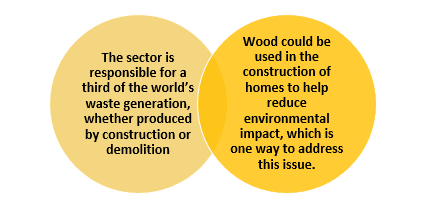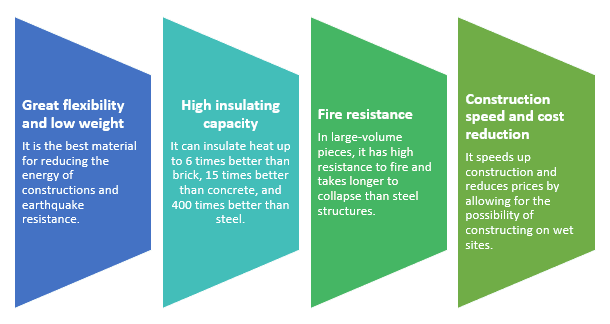From Forest to Form: The Beauty and Benefits of Wooden Buildings
Basically, the use of wood in building construction is called wooden buildings. Since the beginning of time, wood has been one of the most popular building materials. Wood has never lost its popularity, despite great advancements in construction due to the use of steel, concrete, or iron. In fact, many people might be surprised by how many wooden structures there are in the world. Some countries, including Japan, Scotland, or the United States, are significant players in the wood construction industry. The percentage of completely and partially new house development might surpass 60% in Japan, 70% in Scotland, and 85% in the United States.
Despite its popularity in other areas of the world, building wooden houses is sometimes connected across Latin America and the Caribbean with low-quality, low-budget, or small-scale constructions.
Why is wood the best material for housing construction?
The construction industry must be responsible with the preservation of the environment while dealing with this high demand for housing building. Globally, it is predicted that the building of housing exchanges for 39% of Carbon dioxide equivalent and 36% of final energy use. And it is true that the environmental effects of the construction industry are important for two reasons:

In short, for its productivity and impact on the environment.
In addition, processed wood construction not only adds value by serving as an active absorbent of CO2, but also significantly reduces emissions linked to the industrial construction process. Due to its better energy consumption efficiency, this process also reduces costs and future emissions.
Technical benefits of wood in construction:

Emerging Trend:
A global trend is the growth of the mass wood industry. Through energy efficiency, it achieves reduced mechanical system costs while enabling creative design and environmentally friendly construction. Humans are also getting more disconnected from nature as they live in more urban locations. Exposed mass wood enables a link to nature and associated health advantages. In order to meet the increased demand for density as populations in urban areas increases, it can also be used in newly constructed construction.
Hence, in order to create different forms of engineered wood, surplus sawmill wood and other types of wood are combined, making it an eco-friendlier material than concrete and steel. Engineered wood has the same strength as concrete and steel but produces less emissions during production. Also, CLT is a prominent engineered wood type. Cross-laminated timber, also known as CLT, is a building material that can be used in a variety of ways and is both affordable and durable. CLT is flexible and adaptable, and its use benefits the end user by, for instance, preserving clean indoor air. When compared to non-sustainable materials, CLT buildings have a potential reduction in global warming of close to 30%. (Such as concrete).
Conclusion:
Wood for construction is one of the many forest products used around the world as concrete and steel industries together are responsible for as much as 15 percent of global carbon dioxide emissions. Build-in-Wood will create a sustainable environment for the construction of multi-story wood buildings in order to solve the social and environmental problems. The whole construction sector benefits from the usage of and development of sustainable building solutions. In the long run, construction operators will save a lot of money using sustainable materials since they will reduce the cost of raw materials and carbon emissions. Unfortunately, labor and raw material shortages will continue to be a challenge for the industry.
